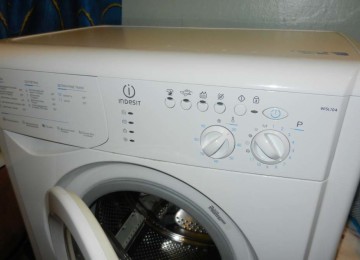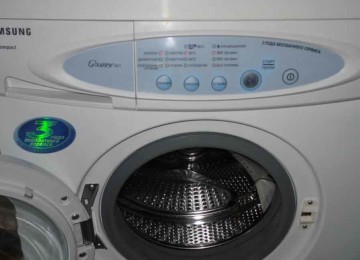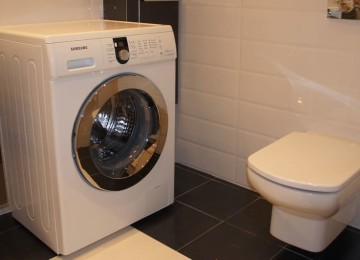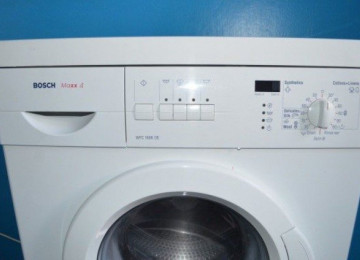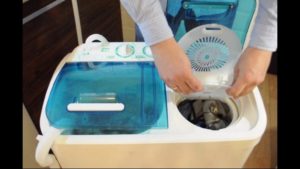 A semi-automatic washing machine is in demand no less than automatic models, since not all parts of the country have the conditions for their connection and normal functioning. Semi-automatic units are often found in rural areas and in holiday villages where there are difficulties with water supply or there is no water supply at all. And in a small apartment with a small bathroom, such a device is a good help in doing laundry, the main thing is to use the semi-automatic washing machine correctly.
A semi-automatic washing machine is in demand no less than automatic models, since not all parts of the country have the conditions for their connection and normal functioning. Semi-automatic units are often found in rural areas and in holiday villages where there are difficulties with water supply or there is no water supply at all. And in a small apartment with a small bathroom, such a device is a good help in doing laundry, the main thing is to use the semi-automatic washing machine correctly.
Types of semi-automatic washing machines
These units are divided into two types according to the number of tanks:
- with one;
- with two.
It is necessary to learn in more detail the characteristics of each category of semi-automatic washing machines to make it easier to understand the operating principle of such a device.
- Single tank machine
These models are the simplest semblance of automatic washing machines, since the processes of washing and spinning clothes are carried out in one container. However, you will have to fill and drain water, set the duration of the washing, rinsing and spinning process manually. Unlike two-tank models, they do not require transferring wet laundry from the first tank to the second.But semi-automatic washing machines of this type are quite rare, since models with two containers are more often produced.
- Double tank machine
These are more popular types of semi-automatic machines, created on the basis of two containers - the main one for washing, and the additional one for drying clothes. There is no automation here; there are only mechanical wash and spin timers that allow you to set the required operating time.
You need to add hot water manually, but if it is only cold, you need to heat it first. To spin, the laundry must be transferred to an additional tank with a built-in centrifuge.
You need to rinse laundry to remove powder and soap in a separate container, since hot water poured into the main tank can be used for several wash cycles (if it is not dirty). If you wish, you can rinse things in the tank where the washing takes place, but you will have to constantly pour out and add water.
When choosing which washing machine is better to choose - automatic or semi-automatic, it is worth considering that the unit of the first option cannot be installed everywhere. For example, in a country house or village there is often no sewerage system or normal water supply, so the operation of such a device will be impossible. Also, you need to install an expensive automatic washing machine only in suitable climatic conditions, which cannot be said about an unheated dacha. And having familiarized yourself with the varieties of semi-automatic washing machines, it becomes clear that this unit can not only wash, but also perform additional functions.
Advantages and disadvantages of using semi-automatic machines

When choosing a semi-automatic washing machine, you need to consider the pros and cons of this unit.The main advantages include:
- compact dimensions - the washing machine can easily fit in any, even very small, room;
- light weight - a semi-automatic washing machine can be easily moved from one place to another in the house and taken with you in the washing mashine (for example, to take it to the country);
- efficiency - unlike its fully automatic counterpart, such a unit consumes less electricity and water;
- vertical loading - even when the washing process is running, things can be added to the tank;
- ease of operation and reliability - there is no need to use special detergents that soften hard water and prevent the appearance of scale, while an automatic washing machine will quickly break down without them;
- you can wash and dry clothes at the same time - this is important for two-tank models;
- no sewerage or centralized water supply is required - before starting the wash, you need to fill the tank with water, and at the end, drain it to a suitable place;
- you can use any powder, even those intended for hand washing;
- You can wash white clothes first, and then, without changing the water, dark clothes;
- Semi-automatic machines do not have a heater or electronics, so such units break down much less often, and repairs will be cheaper than with automatic machines;
- The affordable price of a semi-automatic washing machine allows anyone to purchase it.
The main disadvantages of semi-automatic models include:
- lower power than automatic machines, so it is not always possible to completely remove dirt from things;
- powerful semi-automatic models are similar in price to the cost of automatic washing machines;
- the harder the water, the worse things are washed, and to avoid this, it is recommended to install special filters, which will significantly affect the cost of the unit;
- limited actions - semi-automatic washing machines do not have as many programs as an automatic machine;
- in devices without a drying function, you can only wash, and you will have to wring out things manually;
- washing in a semi-automatic machine must be constantly monitored, since it is necessary to regularly change the water, rinse and wring out things;
- when the hot water is turned off, washing causes additional difficulties;
- Since semi-automatic washing machines have vertical loading, nothing can be stored on top of them, which is not very convenient in a small room.
Having compared all the pros and cons, it is easy to understand that a semi-automatic machine is an indispensable thing if it is not possible to install an automatic washing machine.
Semi-automatic functions
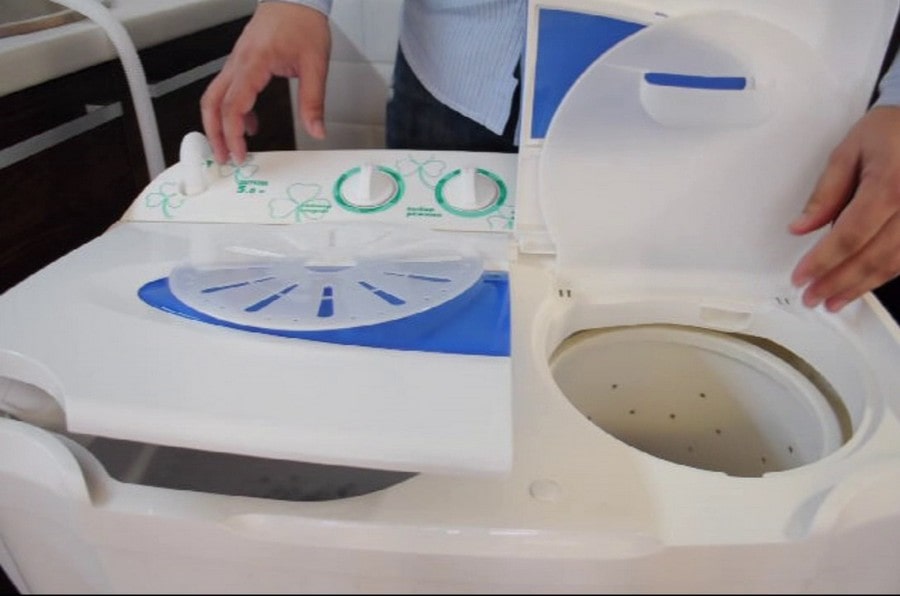
Before using a semi-automatic washing machine, you need to find out about the additional functions that these units are equipped with:
- Spin
Most semi-automatic washing machines are equipped with a spin function. In two-tank models, it is carried out in a centrifuge installed in one of them. If the unit is single-tank, then drying is either absent or performed in the same container.
- Rinsing
To rinse clothes in a semi-automatic machine, you need to repeatedly pour water into the tank. To do this, take things out of the main tank after washing, drain the dirty water, fill the machine with clean water, put clean clothes back in there and start the rinse mode.
- Drain
In most semi-automatic washing units, water is drained manually, for which a drain hole is provided at the bottom of the tank, onto which a hose can be attached if necessary. If there is a drain pump in a semi-automatic device, the cost of the unit will increase significantly.
These are the main functions of a semi-automatic washing machine, allowing you to make the washing process more convenient. And if you can rinse clothes not only in the machine, but in a basin or bathtub, then the presence of a spin cycle significantly facilitates the most difficult part of the process, especially when you need to squeeze out large items.
How to use a semi-automatic machine
The washing process in a semi-automatic machine is quite simple. To do this you need to do the following:
- sort the laundry into several groups - white, colored, cotton, wool, delicate, heavily soiled, etc.;
- if necessary, some items can be pre-washed or soaked (this can be done the day before);
- pour as much hot water into the machine as is required to completely fill the container, including the laundry;
- if there is no hot water, then it must first be heated;
- pour in the amount of washing powder recommended based on the weight of the laundry and degree of soiling;
- load things into the tank and connect the device to the power supply;
- set the washing time using a mechanical timer;
- at the end of the process, you need to take out the laundry, drain the water and fill it with clean water, and then rinse the clothes in the machine (if there is such a function), basin or bathtub;
- after rinsing the laundry, you need to spin it out - in a two-tank machine with a centrifuge, things are immediately transferred there and the spin cycle starts;
- if there is one tank, first all the laundry is rinsed (if there was a lot of washing and the process was started more than once), and then spun in a centrifuge;
- At the end of the spin cycle, the laundry should be hung out to dry.
To facilitate and speed up the process of washing a large number of items in a model with two tanks, you first need to put in white or lightly soiled laundry, and then, if the water is still fairly clean, you can wash a new portion. Rinsing the laundry can be done in a basin, bath or centrifuge while a new wash is in progress, and then spin.
The washing process ends by disconnecting the unit from the power supply. After this, the water is drained from the semi-automatic washing machine, the tanks are rinsed and wiped dry.






